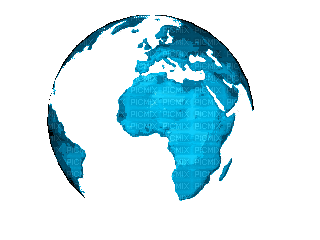Meningkatkan hasil belajar fisika melalui penerapan pembelajaran Self-Directed Learning (SDL)
DOI:
https://doi.org/10.22373/p-jpft.v8i1.14677Keywords:
self-directed learning (SDL), hasil belajar, kemandirian belajar, Abad 21.Abstract
Pembelajaran Fisika mengalami banyak masalah karena sifat materinya yang kompleks sehingga sulit dalam melatih kemandirian siswa dalam pembelajaran. Penelitian ini bertujuan untuk mengimplementasikan pembelajaran Self-directed learning (SDL) dalam membangun kemandirian belajar untuk mengoptimalkan hasil belajar siswa. Metode penelitian ini adalah quasi experiment dengan desain pre-posttest control group design, dengan melibatkan 53 orang siswa yang terbagi menjadi dua kelompok. Kelompok eksperimen diberi penerapan pembelajaran SDL dan kontrol dengan konvensional. 16 item instrumen pilihan ganda digunakan untuk mengukur hasil belajar siswa. Berdasarkan analisis uji-tα=0,05 diperoleh nilai sig. sebesar 0,001. Hasil ini menunjukan terdapat pengaruh yang signifikan pembelajaran SDL terhadap ketercapaian hasil belajar siswa. SDL dapat memberikan kesempatan kepada siswa untuk mengoptimalkan hasil belajar fisika dan dapat melatih kemandirian belajar siswa dalam membangun pemahaman konsep fisika pada materi Gerak Melingkar.References
Bodkyn, C., & Stevens, F. (2015). Self-directed learning, intrinsic motivation and student performance. Caribbean Teaching Scholar, 5(2), 79–93.
Diansah, I., & Asyhari, A. (2020). Effectiveness of physics electronic modules based on Self Directed Learning Model (SDL) towards the understanding of dynamic fluid concept. Journal of Physics: Conference Series, 1572(1). https://doi.org/10.1088/1742-6596/1572/1/012024
Din, N., Haron, S., & Rashid, R. M. (2016). Can Self-directed Learning Environment Improve Quality of Life? Procedia - Social and Behavioral Sciences, 222, 219–227. https://doi.org/10.1016/j.sbspro.2016.05.150
Dinata, P. A. C., Sastradika, D., & Safitri, A. D. (2017). Implementation of Gasing Learning in ARCS Learning Strategy to Enhance Students’ Motivation in 9. International Journal of Pedagogy and Teacher Education (IJPTE), 1(2), 80–92.
Friselya, E. Y., Wulandari, I., Maulida, R. Y., Nur, A., Mahardika, I. K., & Subiki, S. (2022). Efektivitas Video Pembelajaran Usaha dan Energi Berbasis Multirepresentasi terhadap Peningkatan Hasil Belajar Siswa. Jurnal Phi: Jurnal Pendidikan Fisika Dan Fisika Terapan, 3(3), 19–23.
Handayani, N. N. L. (2017). Pengaruh Model Self-Directed Learning Terhadap Kemandirian Dan Prestasi Belajar Ipa Siswa Kelas Viii Smp N 3 Singaraja. Jurnal Ilmiah Pendidikan Dan Pembelajaran PPs Universitas Pendidikan Ganesha, 1(1), 38–47.
Hew, K. F., Law, N., Wan, J., Lee, Y., & Kwok, A. (2016). Self-directed learning in science education: Explicating the enabling factors. Proceedings of International Conference of the Learning Sciences, ICLS , 1(2007), 679–686.
Iskandar, Sastradika, D., & Defrianti, D. (2019). Optimizing Inquiry-based Learning Activity in Improving Students’ Scientific Literacy Skills. Journal of Physics: Conference Series, 1233(1), 1742–6596. https://doi.org/10.1088/1742-6596/1233/1/012061
Komariah, S., & Huda, A. (n.d.). Hubungan Pemahaman Konsep Integral dengan Hasil Belajar Fisika Materi Kecepatan dan Percepatan. Prosiding Seminar Nasional Pendidikan STKIP Kusuma Negara II, 310–313.
Kovalenko, N. A., & Smirnova, A. Y. (2015). Self-directed Learning through Creative Activity of Students. Procedia - Social and Behavioral Sciences, 166, 393–398. https://doi.org/10.1016/j.sbspro.2014.12.542
Lalitha, T. B., & Sreeja, P. S. (2020). Personalised Self-Directed Learning Recommendation System. Procedia Computer Science, 171(2019), 583–592. https://doi.org/10.1016/j.procs.2020.04.063
Permatasari, S. A., & Anggaryani, M. (2021). Penerapan Self-Directed Learning (SDL) dalam Pembelajaran Fisika SMA Berbasis Daring Pada Pokok Bhasan Hukum Newton. PENDIPA Journal of Science Education, 5(3), 403–411. https://doi.org/10.33369/pendipa.5.3.403-411
Rachmawati, D. O. (2020). Penerapan Model Self-Directed Learning untuk Meningkatkan Hasil Belajar dan Kemandirian Belajar Mahasiswa. Jurnal Pendidikan Dan Pengajaran, 43(3), 177–184.
Rahayuningsih, D. I. ;, Mustaji;, & Subroto, W. T. (2018). Saintifik untuk meningkatkan hasil belajar mata pelajaran ips bagi siswa kelas iv sekolah dasar. Jurnal Review Pendidikan Dasar, 4(2).
Rifanti, U. M., & Pujiharsono, H. (2018). Pengaruh Model Pembelajaran Self Directed Learning terhadap Hasil Belajar Mahasiswa pada Mata Kuliah Matematika Diskrit. Journal of Medives : Journal of Mathematics Education IKIP Veteran Semarang, 2(2), 245. https://doi.org/10.31331/medives.v2i2.650
Sastradika, D., Iskandar, I., Syefrinando, B., & Shulman, F. (2021). Development of animation-based learning media to increase student’s motivation in learning physics. Journal of Physics: Conference Series, 1869(1). https://doi.org/10.1088/1742-6596/1869/1/012180
Sastradika, D., & Jumadi. (2018). Development of subject-specific pedagogy based on guided inquiry about newton ’ s law to improve senior high school students ’ scientific literacy ability Development of subject-specific pedagogy based on guided inquiry about newton ’ s law to improve sen. Journal of Physics: Conference Series, 1097(1), 1742–6596.
Silverman, M. P. (1995). Self‐directed learning: A heretical experiment in teaching physics. American Journal of Physics, 63(6), 495–508. https://doi.org/10.1119/1.18080
Siriwongs, P. (2015). Developing Students’ Learning Ability by Dint of Self-Directed Learning. Procedia - Social and Behavioral Sciences, 197(February), 2074–2079. https://doi.org/10.1016/j.sbspro.2015.07.577
Uus, Õ., Seitlinger, P. C., & Ley, T. T. (2020). Cognitive capacity in self-directed learning: Evidence of middle school students’ executive attention to resist distraction. Acta Psychologica, 209(May), 103089. https://doi.org/10.1016/j.actpsy.2020.103089
Wasyilah, W., Yusrizal, Y., & Ilyas, S. (2021). Application of Self Directed Learning Model to Improve Student’s Independence and Critical Thinking Skills. Jurnal Penelitian Pendidikan IPA, 7(4), 651–659. https://doi.org/10.29303/jppipa.v7i4.784
Downloads
Additional Files
Published
Issue
Section
License
Authors who publish with Jurnal Phi agree to the following terms:
- Authors retain copyright and grant the journal right of first publication with the work simultaneously licensed under a Creative Commons Attribution License (CC BY 4.0) that allows others to share the work with an acknowledgment of the work's authorship and initial publication in this journal.
- Authors are able to enter into separate, additional contractual arrangements for the non-exclusive distribution of the journal's published version of the work (e.g., post it to an institutional repository or publish it in a book), with an acknowledgment of its initial publication in this journal.
- Authors are permitted and encouraged to post their work online (e.g., in institutional repositories or on their website) prior to and during the submission process, as it can lead to productive exchanges, as well as earlier and greater citation of published work (See The Effect of Open Access).

















